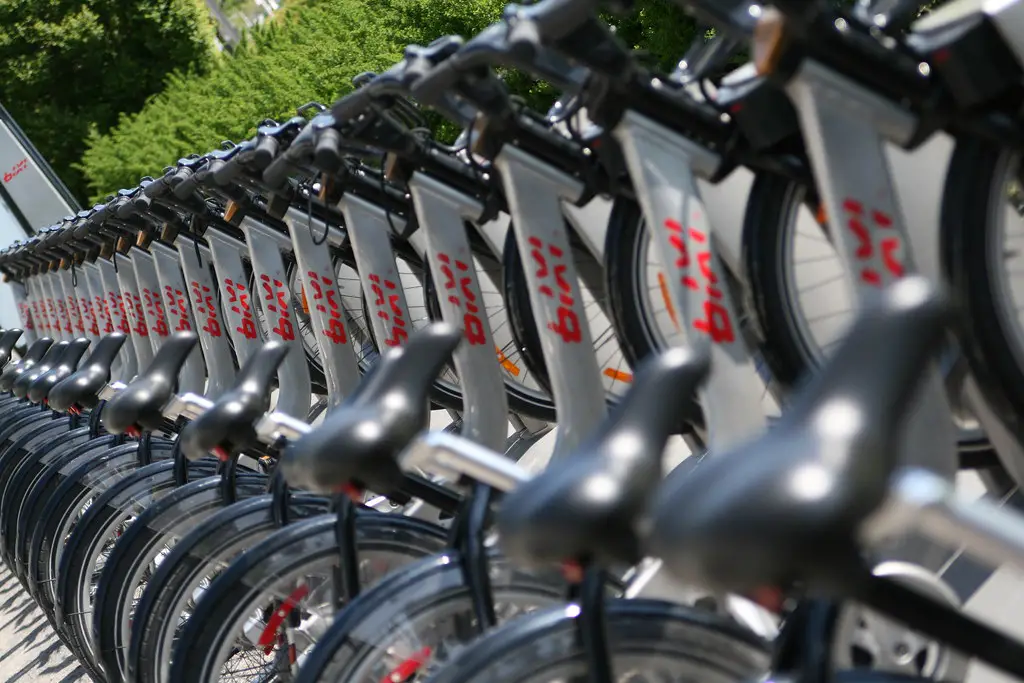For the bicycle to really catch on and Governments around the world to meet their mode share targets, we need a revolution in cycling infrastructure. Developed on the back of Transport Network Investigation and with some funding from the Australian Institute of Transport Planning and Management, my vision is for a network of Cycling Super Highways that are:
- 7.7 metre wide dedicated and separated cycle paths.
- Completely separated from parked and moving vehicles.
- Safe enough for everyone to use regardless of age, physical abilities or cycling skills.
Cycling Super Highways (CSH) will make the ordinary extraordinary and enable the Governments to not just achieve but exceed their mode share targets because ‘average, normal, everyday people’ will choose to ride bikes, not because they are cyclists but because CSH are safe, comfortable, attractive, direct and connected.
Cycling Super Highways are:
- Wide enough to cater for everyone – CSH allow two cyclists to cycle side by side because cycling is a really sociable mode of travel. CSH have enough space for a faster moving cyclist to overtake a slower moving cyclist. Existing on and off road cycle paths are just too narrow for cyclists to cycle side by side and also too narrow for people to overtake one another.
- Safe enough for everyone to use – CSH are safe enough for everyone to use regardless of their age, physical ability and cycling skills. CSH are about capacity – more people cycling more of the time – and everyone feeling empowered enough to consider cycling an equal mode of travel. CSH are not about speed and elite sports cyclists.
- Protected enough to encourage everyone to cycle – Most people are too scared to cycle close to traffic or parked cars. We currently use on-road cycle lanes – and the brave and courageous cyclists who use them – to ‘protect’ our parked cars from moving traffic! CSH are different because people riding bikes will be completely separated from parked and moving vehicles.
- Socially inclusive enough to support mobility aids – CSH are wide enough to allow mobility aids and powered wheelchairs to co-exist with bicycles helping to combat issues associated with an ageing population and our obesity crisis.
The Cycling Super Highways plan for cities includes:
- A network of 7 metre wide Cycling Super Highways within 5km of Brisbane’s Central Business District – because 5km can easily be cycled in less than 15 minutes (when cycling at a uninterrupted speed of 20km/hr).
- An orbital 7 metre wide Cycling Super Highway following the 5km radius.
- Within 5km and 10km of the centre there is a network of 4.0 metre wide bi-directional cycle paths which ‘feed into’ and ‘connect to’ the Cycling Super Highways because 10km can easily be cycled in less than 30 minutes (cycling at a speed of 20km/hr).
I’ve developed a range of funding mechanisms to pay for this CSH vision, including: value capture, Business Improvement Districts, area wide developer contribution programmes, carbon offset ‘collective’ funds, low density development levy, commercial car parking tax and congestion charging.
During my research, I held conversations with women, children and seniors in Brisbane – demographics who don’t typically cycle – to find out why people are not cycling. The predominant reasons were the lack of safe and dedicated cycle infrastructure and traffic fears, concluding that people who ride a bike and people who want to ride a bike, want complete separation from parked and moving cars. I then visited 24 ‘Cycling Cities’ around the world to discover first-hand what width and types of cycle infrastructure had revolutionised and transformed a ‘city’ into a ‘cycling city’. Finding that the ‘common’ features in these cities were 4.0–5.0 metres of ‘usable’ cycle space separated from motorised traffic, the CSH vision was born.
I know we can’t just go out tomorrow digging up roads and knocking down houses to build Cycling Super Highways but there are lots of opportunities. For example, if a tunnel was built then a CSH should be built at grade along the river and CSH should support the Rapid Transit networks because public transport patronage is dependent on ‘walk up’ and ‘cycle up’ access.
At the moment we build skinny unprotected on–road cycle lanes, often less than half a metre wide and then stand back and wonder why ‘normal’ people don’t cycle. In an attempt to ‘get more people cycling more of the time’, we build more skinny unprotected on-road cycle lanes and not surprisingly people still don’t cycle and so the vicious cycle continues.
If we are serious about cycling and meeting the 2031 transport targets we have to build cycle facilities which get ‘normal’ people, wearing ‘normal’ clothes, not lycra, on ‘normal’ bikes, cycling for ‘normal’ transport trips; to the supermarket, to work, for coffee, to the movies, not because they are cyclists but because riding a bike is easier, cheaper, faster and a whole lot more fun. If as cities/regions we are serious about cycling we need serious infrastructure like Bogota, Copenhagen, Amsterdam, Munster, Malmo and Groningen…. Then our cities will be world class cities and cycling cities!


